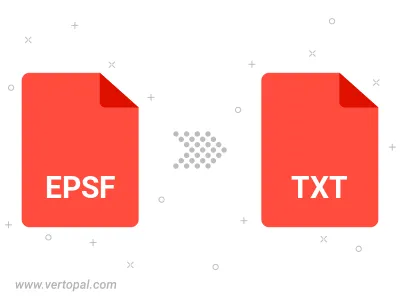Convert EPSF to TXT BRAILLE6DOTS
Convert EPSF images to TXT BRAILLE6DOTS format, edit and optimize images online and free.

An EPSF, or Encapsulated PostScript File, is a graphics file format used primarily in the publishing and printing industries for embedding high-resolution images within other PostScript documents. Introduced by Adobe Systems in the late 1980s, EPSF files enable seamless integration of complex visual elements, maintaining quality and device independence. They encapsulate both vector and raster graphics, allowing detailed illustrations and photographs to be embedded without loss of resolution, facilitating professional-quality output across various platforms and devices.
A TXT file extension, associated with "Unicode Braille 6 Dots", refers to the representation of braille characters within the Unicode standard, specifically using a 6-dot cell configuration. This allows for the encoding of braille patterns, making it accessible for visually impaired users to read and write text digitally. The history of braille dates back to its invention by Louis Braille in the 19th century, and its inclusion in Unicode ensures compatibility across various digital platforms.
Choose the EPSF image you wish to convert.
Before clicking the Convert button, use any available EPSF to TXT BRAILLE6DOTS tools.
Wait a few moments for the converter to complete its job, then download your TXT BRAILLE6DOTS file.

To change EPSF format to TXT BRAILLE6DOTS, upload your EPSF file to proceed to the preview page. Use any available tools if you want to edit and manipulate your EPSF file. Click on the convert button and wait for the convert to complete. Download the converted TXT BRAILLE6DOTS file afterward.
Follow steps below if you have installed Vertopal CLI on your macOS system.
cd to EPSF file location or include path to your input file.Follow steps below if you have installed Vertopal CLI on your Windows system.
cd to EPSF file location or include path to your input file.Follow steps below if you have installed Vertopal CLI on your Linux system.
cd to EPSF file location or include path to your input file.